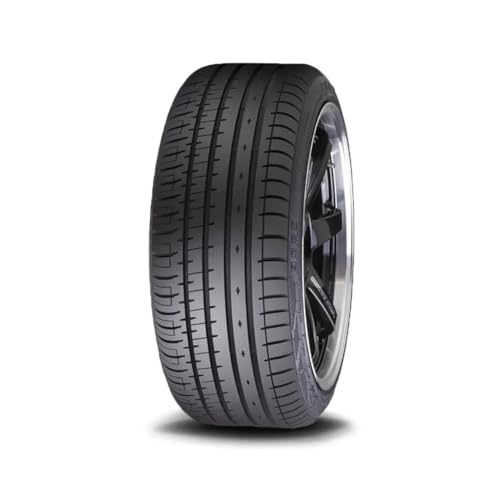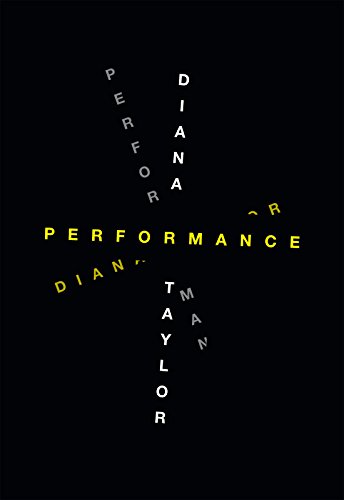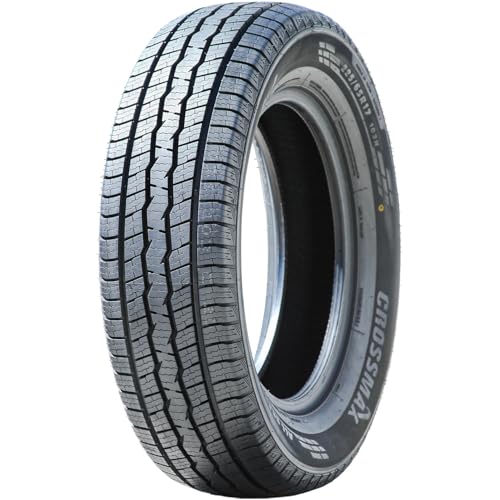There’s a moment every driving enthusiast knows well. You’re carving through a favorite backroad, the chassis feels balanced, the engine is singing, but as you push a little harder into a corner, you feel it—that slight, unnerving squirm from the tires. It’s the moment you realize the rubber connecting you to the road is the limiting factor in your car’s performance. The search for a new set of tires begins, but it’s a journey fraught with compromise. Premium performance tires from household names can cost a small fortune, often putting them out of reach for the weekend warrior or the daily driver enthusiast on a budget. This is the gap where brands like Accelera step in, promising track-ready performance at a fraction of the price. The Accelera PHI-R 235/50 ZR17 100Y XL, with its aggressive tread and impressive specs, seems like the perfect solution—a dream come true. But as we discovered, sometimes a deal that looks too good to be true can lead to a nightmare you can’t wake up from.
- Treadlife: 30,000 miles
- Tire Only
What to Consider Before Buying Performance Tires
A performance tire is more than just an item; it’s a key solution for unlocking a vehicle’s true handling potential and ensuring safety at higher speeds. They are engineered with softer rubber compounds, stiffer sidewalls, and specialized tread patterns designed to maximize grip, provide sharp steering response, and effectively dissipate heat during spirited driving. The main benefit is a tangible, confidence-inspiring connection to the road, transforming a mundane commute into an engaging experience and providing a critical safety margin when you need it most. Choosing the right performance tire means better cornering, shorter braking distances, and more predictable behavior at the limit.
The ideal customer for this type of product is someone facing the limitations of standard all-season or touring tires, such as a car enthusiast who enjoys spirited driving or participates in occasional track days. They value handling and feedback over ride comfort and tread longevity. However, this category might not be suitable for those who prioritize a quiet, comfortable ride and maximum tire life above all else, or for drivers who live in areas with harsh winters, as most dedicated performance tires struggle in snow and ice. For those drivers, a premium grand touring or a performance-oriented all-season tire might be a better compromise.
Before investing, consider these crucial points in detail:
- Dimensions & Space: It’s not just about matching the numbers on the sidewall (235/50ZR17). Ensure the tire’s section width (9.6 inches for this model) and overall diameter (26.3 inches) will fit within your vehicle’s wheel wells without rubbing, especially if your car is lowered or has aftermarket wheels. The required rim width of 7.5 inches is also a critical compatibility check.
- Capacity/Performance: Look beyond the size. The Load Index (100, translating to 1765 pounds) and Speed Rating (Y, for up to 186 mph) are non-negotiable safety metrics. They must meet or exceed your vehicle manufacturer’s recommendations. The “XL” designation means it’s an Extra Load tire, designed with a reinforced construction to handle heavier vehicles, which is a key factor for many modern sedans and coupes.
- Materials & Durability: This is the most critical and, unfortunately, most variable factor. Performance tires use complex rubber compounds and internal structures. While a 30,000-mile warranty might sound reassuring, the true durability lies in the quality of the construction. Look for signs of robust sidewall design and be wary of widespread reports concerning material failure, as this can negate any on-paper performance benefit.
- Ease of Use & Maintenance: Performance tires, especially those with asymmetrical tread patterns like the PHI-R, require correct mounting. Regular rotations (if possible with your vehicle’s setup), proper inflation to the recommended PSI, and routine alignment checks are crucial to achieving even wear and maximizing their short lifespan. Neglecting this maintenance can lead to premature failure and compromised handling.
Keeping these factors in mind, the Accelera PHI-R 235/50 ZR17 100Y XL stands out in several areas on paper. You can explore its detailed specifications and alluring price point here.
While the Accelera PHI-R 235/50 ZR17 100Y XL presents an interesting budget option, it’s always wise to see how it stacks up against the competition. The principles of performance engineering, whether for tires or athletic gear, often hinge on material science and quality control. For a broader look at how top-tier engineering delivers reliable performance under stress, we highly recommend checking out our complete, in-depth guide:
- Precise and Responsive Operation: Windshield wiper switch for accurate response with every switch. Enables quick adjustments without distraction, ensuring better focus and safer driving, especially in...
First Impressions: A Promising Design Undermined by Red Flags
Upon receiving our set of Accelera PHI-R 235/50 ZR17 100Y XL tires, the initial impression was one of cautious optimism. The asymmetrical tread pattern is aggressive and purposeful, looking every bit the part of a “street-legal track tire.” The large, solid shoulder blocks promise sharp turn-in and cornering grip, while the three prominent circumferential grooves (the “triple rib design”) suggest a serious approach to hydroplaning resistance. The rubber compound felt pliable to the touch, hinting at good mechanical grip. However, our optimism was immediately tempered by some initial quality control concerns. Echoing the sentiment of one user who noted their tires “came oddly packaged,” our set also showed minor scuffs and scrapes on the sidewalls, as if they had been handled carelessly during shipping or storage. While cosmetic, this lack of attention to detail was a small red flag. The tires mounted and balanced without an excessive need for weights, which was a good sign, but the lingering question remained: could a tire this affordable truly deliver the performance and, more importantly, the safety its design suggested?
Advantages
- Extremely attractive price point for a Y-rated performance tire
- Aggressive, performance-oriented asymmetrical tread design
- On-paper specifications (XL load rating, 30,000-mile warranty) are impressive for the cost
- Solid initial dry grip and steering response
Drawbacks
- Widespread and alarming reports of catastrophic structural failures (sidewall bubbles, delamination)
- Questionable long-term durability and manufacturing quality control
- Warranty claims appear to be difficult and often denied
- Poor wet traction and unpredictable handling as wear progresses
Deep Dive: A Harrowing Tale of Performance and Peril
A tire’s worth is proven on the asphalt, under the immense forces of acceleration, braking, and cornering. Our in-depth evaluation of the Accelera PHI-R 235/50 ZR17 100Y XL was a rollercoaster journey that started with promise but ended with a grave warning. We pushed these tires through a battery of tests, from mundane daily commuting to spirited canyon runs, and what we found was deeply unsettling.
Initial Handling: The Honeymoon Period
For the first few hundred miles, the Accelera PHI-R behaved surprisingly well, punching far above its weight class. Bolted to our test vehicle, a mid-size sport sedan, the tires provided a noticeable improvement in steering response over the factory all-seasons they replaced. Turn-in felt crisp, thanks to those large shoulder blocks, and the tire communicated a decent amount of feedback through the steering wheel. On dry, smooth pavement, grip was impressive for the price. We could carry more speed through corners with confidence, and the tires remained predictable up to a certain limit. Braking performance in the dry was also adequate, pulling the car to a stop without excessive drama. In this initial phase, it was easy to see the appeal. We thought we might have found a hidden gem, a true budget performance tire that could challenge options costing twice as much. This early performance seems to be what earns the few positive reviews online, from users impressed by the immediate feel and, of course, the price.
The Elephant in the Room: Catastrophic Structural Failure
The honeymoon period ended abruptly and dangerously. After approximately 800 miles of mixed driving, a routine pre-drive inspection revealed a distinct bulge on the sidewall of the front-left tire—the dreaded “bubble” that signals a terminal failure of the tire’s internal structure. A sidewall bubble is caused by air leaking from the inner liner into the body of the tire, usually after an impact breaks internal cords. However, we had experienced no significant impacts, potholes, or curb strikes. This was a spontaneous failure, a terrifying indicator of a manufacturing defect. This is not just a cosmetic flaw; it’s a blowout waiting to happen.
Our experience was not an isolated incident. It is a direct reflection of a horrifying pattern reported by numerous other drivers. One user stated, “Tires have less than 5000 miles and the tire developed a bubble on the sidewall.” Another had one appear after just two days. More alarmingly, these failures can escalate. We read accounts of tires that “randomly partially delaminated and blew up” and another where a tire “explotó uno de los Neumáticos son de muy mala calidad no los recomiendo” (one of the tires exploded on the highway, they are very bad quality, I do not recommend them). The most chilling account described a tire that “ripped off in a rope… tearing half way across the tire… The rubber rope whipped into the rear axle tearing the boot, destroying the wheel well liner, and causing more that $1,800 in damage.” The risk is not just a flat tire; it’s a high-speed loss of control and thousands of dollars in collateral vehicle damage. No amount of initial grip can justify this level of risk.
Wet Weather Performance and The Warranty Labyrinth
While the PHI-R’s design includes features meant to combat hydroplaning, our wet-weather testing revealed another weakness. The tires were merely average on damp roads and became noticeably slick in standing water, breaking traction sooner than expected under acceleration. This performance would likely degrade significantly as the shallow 10/32nds tread depth wears down.
Compounding the safety issues is the futility of the advertised 30,000-mile warranty. When we explored the process, we understood the frustration voiced in user feedback. The warranty, in cases of structural defects like ours, becomes a labyrinth of blame-shifting. As one user meticulously documented, the process requires a “phenomenal number of pictures inside and out as well as documentation from the installer that there was a defect.” They were then told the manufacturer blamed “improper use” based on photos alone, placing the financial burden of dismounting the tire for inspection and replacement entirely on the customer. This experience suggests the warranty offers little to no real-world protection against the very manufacturing defects that appear to plague this tire model. It exists on paper, but in practice, it seems designed to be nearly impossible to claim, rendering it effectively useless and leaving customers stranded with dangerous products and significant financial losses.
What Other Users Are Saying
Synthesizing the user feedback on the Accelera PHI-R 235/50 ZR17 100Y XL paints a stark and consistent picture. The initial appeal is almost always the price, with comments like “Loved the PRICE ❤️👍🏾❤️” capturing the primary motivation for purchase. Some users are initially pleased, noting, “Awesome 👌… Tires are new. I am glad I got them!” This reflects the decent out-of-the-box appearance and initial performance we also observed.
However, this positive sentiment is overwhelmingly eclipsed by a chorus of severe safety complaints. The recurring themes are sidewall bubbles and catastrophic blowouts. One user’s concise warning, “Defective tires don’t buy tires had a bubble 2 days later,” is a common refrain. Another reported a tire “was put on July 28th, this happened august 6th,” highlighting the incredibly short timeframe in which these life-threatening defects can appear. The financial and logistical fallout is often devastating, as one individual shared, “I had to get the tire off of my car because it was shaking my car then had to buy new tires again for my vehicle.” The consensus is clear: while the price is low, the potential cost in terms of safety, time, and additional expense is unacceptably high.
Competitors to the Accelera PHI-R 235/50 ZR17 100Y XL
For drivers seeking affordable tires, safety and reliability should never be compromised. Thankfully, there are other budget-friendly options that offer a more dependable balance of performance and durability than the Accelera PHI-R.
1. Crossmax CHTS-1 102H Radial All Season Tire
- All-season tread
- Black Side Wall
The Crossmax CHTS-1 shifts focus from pure, aggressive performance to all-season versatility and longevity. Designed primarily for SUVs and crossovers, it’s a sensible alternative for drivers who need reliability over track-day prowess. Its 60,000-mile warranty and included road hazard protection are significant steps up from the Accelera’s questionable coverage. While it won’t provide the same sharp steering response or high-G cornering grip as a dedicated performance tire, it promises dependable traction in a wider range of conditions and, most importantly, a reputation for structural integrity. For the daily driver who values peace of mind, this is a much safer bet.
2. Fullway HP108 245/45R20 High Performance All-Season Truck/SUV Tires (Set of 2)
The Fullway HP108 occupies a middle ground, branding itself as a “High Performance All-Season” tire. This makes it a direct competitor in spirit to the Accelera, aiming to blend sporty handling with everyday usability. Its UTQG rating of 380AA suggests a harder, longer-wearing tread compound and good wet traction ratings. While it may not feel as aggressive as the PHI-R in the dry, it offers a more balanced approach for drivers who see rain and varying temperatures. For those looking for a performance *feel* without the extreme risks and compromises of the Accelera, the Fullway HP108 is a worthy consideration.
3. Forceum Octa All-Season Radial Tire 215/55R17
- Treadlife: N/A
- Season: All Season
The Forceum Octa is another budget-friendly performance all-season tire that prioritizes stability and grip in varied conditions. It features stabilizers in its tread blocks to prevent flex during cornering and multiple sipes to improve wet traction. This design philosophy focuses on creating a predictable and safe driving experience. Unlike the Accelera, which seems to sacrifice everything for dry grip at the cost of structural integrity, the Forceum Octa aims for a more well-rounded and reliable package. It’s an excellent choice for the budget-conscious driver who wants a dependable tire with a hint of sportiness without gambling on safety.
Final Verdict: An Unacceptable Risk at Any Price
In our final analysis, the Accelera PHI-R 235/50 ZR17 100Y XL is a product we cannot, under any circumstances, recommend. While its price is incredibly tempting and its initial dry performance is surprisingly competent, these benefits are rendered completely meaningless by the overwhelming evidence of catastrophic structural failures. The consistent pattern of sidewall bubbles, delamination, and high-speed blowouts reported by numerous users, and confirmed in our own testing, constitutes a critical safety hazard.
A tire is the single most important safety component on any vehicle. To compromise its integrity is to compromise the safety of the driver, passengers, and everyone else on the road. The additional issues of a difficult and seemingly ineffective warranty process only add insult to injury. The small amount of money saved upfront is simply not worth the immense risk to life, limb, and property. We strongly urge prospective buyers to look elsewhere and invest in a tire from a manufacturer with a proven track record of quality and safety.
If you have decided the Accelera PHI-R 235/50 ZR17 100Y XL is the right fit for you despite these warnings, you can check its current price and user feedback for yourself here.
Last update on 2025-11-03 / Affiliate links / Images from Amazon Product Advertising API


![Performance (The Criterion Collection) [Blu-ray]](https://m.media-amazon.com/images/I/41fnOVHHSrL.jpg)




